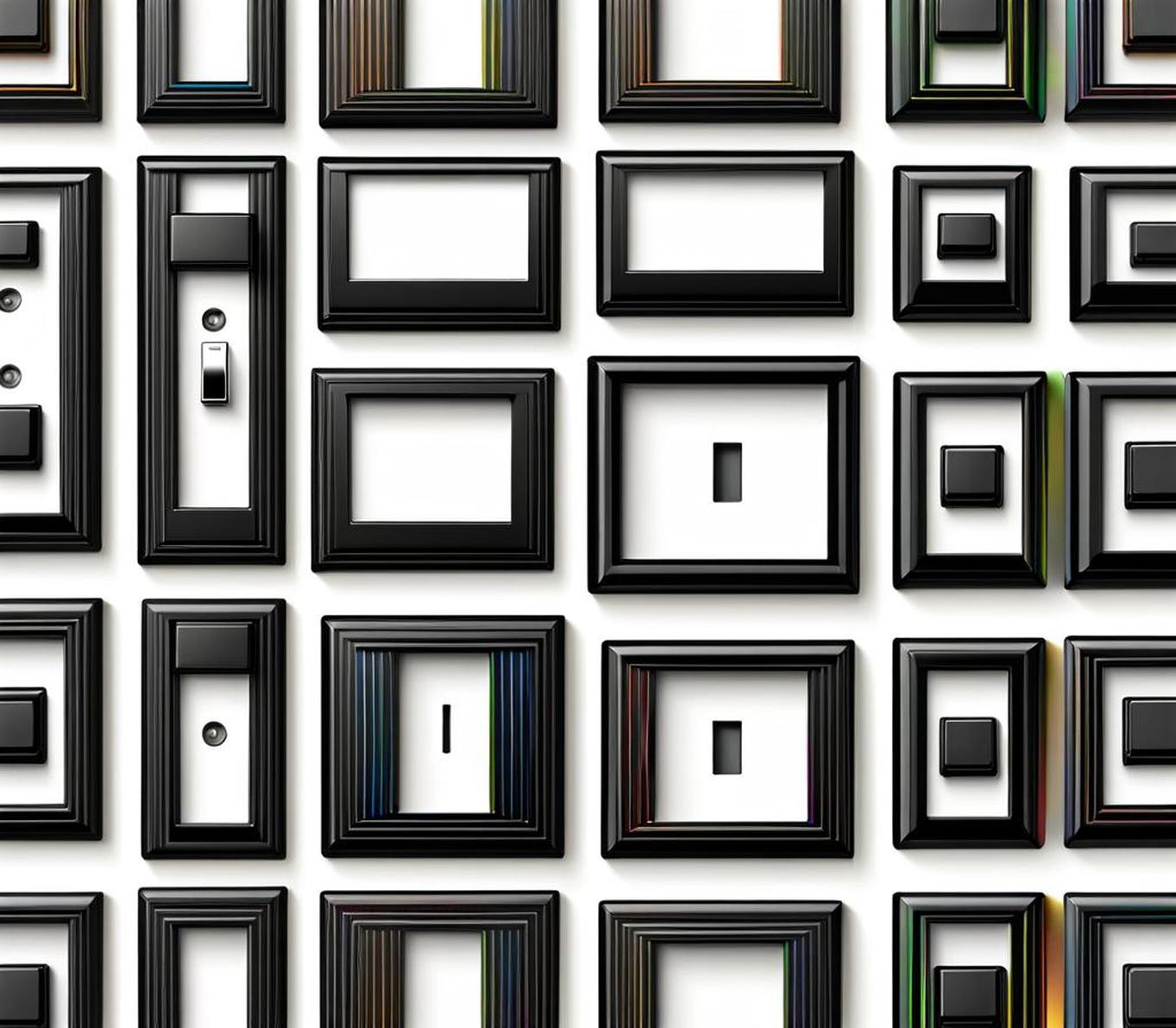Black switch plates can feel starkly out of place on bright white walls. But with some clever styling tricks, you can make them seem to vanish into the background for a clean, seamless look.
Keep reading to unlock tips for making black switches coordinate beautifully with pristine white walls, from alternative metals to custom paint jobs.
Why Black Switch Plates Stand Out on White Walls
Contrast Makes Them Visible
Black and white lie on opposite ends of the color spectrum. So when you place dark black switch plates against a white wall, the contrast draws the eye straight to them.
Unlike white plates that can blend into the walls, the dark black plastic or metal switch covers will always be noticeable due to this extreme color difference.
Most Homes Have White Walls
White paint ranks among the most popular wall colors. Clean and bright white walls make spaces appear open and airy, allowing room features and decor to pop.

But that desired brightness also ensures black electrical switches and outlets stand out in stark relief. So if you prefer a more seamless look, black plates may not suit typical white walls.
Blending Options for Seamless Look
Fortunately, you have stylish options for minimizing the high contrast between inky switches and pearly walls.
Paint Entire Wall Plate Assembly
For the most cohesive effect, paint the switches and wall plates the exact same shade of white as your walls. This erases the contrast completely. Include the electrical box in your paint job as well so no dark colors show through trim gaps.
Use the wall’s exact paint code to guarantee a perfect match. Allow proper drying time between coats. Finish with a clear spray on top for protection and sheen.
Choose Alternative Neutral Metal Finishes
Rather than stark black plastic or paint, upgrade your switches to complementary metal finishes like brushed nickel, polished chrome, oil-rubbed bronze or matte silver.
Metallic metals still provide contrast against white walls, but their muted shine blends better than flat black. Feel free to mix and match plate styles for eclectic flare.
Consider Wall Texture When Painting
If you opt to paint your black switches, keep wall texture in mind for seamless integration. Use painter’s tape around edges for crisp paint lines. Lightly sand glossy plastic plates so the paint adheres better.
Apply two to three thin coats of paint, allowing proper drying time between each to prevent drips or bubbling. The result will be subtly pretty switches that disappear onto textured walls.
Painting Black Switch Plates to Match Walls
For the closest camouflage, painting glossy black switch plates with the same white wall paint is best. Take steps to ensure the freshly painted switches coordinate perfectly.
Select Correct White Paint
Using the exact white paint already on your walls avoids guessing games. The plate color will match the walls flawlessly every time. Most paint stores can look up the formula if you provide wall paint details like:
- Brand
- Color name/number
- Sheen level
- Product number
With the right white paint matched to your walls, prep and apply it to switches as follows.
Properly Prep the Surface
To help fresh paint properly adhere:
- Clean plates thoroughly first with rubbing alcohol to remove oils and residue.
- Lightly scuff shiny plastic plates with fine sandpaper so the paint grips better.
- Use painter’s tape to mask wall edges for super sharp paint lines.
Apply Paint in Thin Coats
Aim for two to three thin coats of paint rather than one thick coat for a smooth finish. Thick coats can drip or bubble. Let each coat fully dry before adding the next. White typically requires an extra coat or two for solid coverage over black plates.
Paint Screws Separately
Removing screwed-in plates later risks pulling up paint along the edges. Avoid this by:
- Painting screws separately so no paint touches the threads.
- Allowing screws to dry fully before reinserting to avoid smudging paint on the surrounding switch plate.
This protects your painted finish long-term while keeping wall plates easily removable for maintenance.
Achieve Long-Lasting Paint Finish
Taking steps after painting ensures your sleek white switches stay pristine as long as possible.
Spray Clear Top Coat Over Paint
Adding a clear gloss or matte spray sealant protects the painted surface from inevitable fingerprints and light switch friction over time. It also lends an attractive uniform shine across multiple painted plates.
Check Paint Adhesion
Before screwing freshly painted plates back into the wall boxes, test paint adhesion by:
- Waiting the can’s recommended curing timeframe for the paint to fully bond and harden.
- Checking if the paint feels dry and smooth without any tackiness.
- Gently nicking a hidden spot on the paint with a fingernail to confirm it feels scratch-resistant.
If the paint dent or peels, allow additional drying time. Proper curing prevents tacky paint and chips down the road.
To avoid cracking paint that may still feel delicate even when cured:
- Line up screw holes precisely before slowly tightening screws.
- Gradually increase torque as you alternately tighten opposing screws a few turns at a time.
- Stop immediately if you notice cracking and allow extra drying time if needed.
Taking care when reattaching freshly painted plates keeps your crisp white switches looking flawless for years.
You can remove obtrusive black switch plates from bright white walls with these handy tips. Simply paint them to match or opt for metallic alternatives. Just ensure proper paint prep, application and curing for seamless results that stand the test of time. Then flick those switches proudly as they seem to disappear onto pearly walls.
